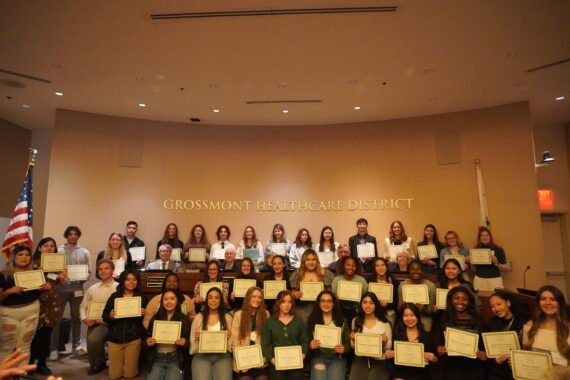Deadly Fentanyl a growing danger to East County
August 24, 2021 Board, General
As published in The East County Californian, August 2021
by Virginia Hall, RN
San Diego County law enforcement leaders have sounded the alarm. Deaths from fentanyl overdoses are expected to reach over 700 this year including babies and children. It only takes a speck to kill someone. To educate people, they are working to get the message out that if the pill or drug you are taking did not come from a pharmacy it could kill you.
Fentanyl is a synthetic opioid pain reliever. Opioid addiction has been making headlines in our country for decades. In 2016, the crisis hit hard in our own backyard, with approximately 125 million opioid pills sold that year in San Diego County. Prescribed by doctors, but also sold illegally outside of hospitals, opioid pills can cause dependence and death by blocking pain and increasing pleasure receptors in the brain, similarly to heroin. Compared to the rest of San Diego County overall, East County consistently has the highest rates of opioid misuse and death.
While some debate occurs over which came first, the cause or the effect of Opioid misuse, the risk factors for opioid abuse include overlapping prescriptions with multiple doctors and pharmacies, taking high daily doses, untreated psychiatric disorders, and living in a rural area.
Fentanyl, in particular, accounts for the growing number of deaths; in 2020, an average of four residents died each day of an overdose in San Diego County, a 202% increase from 2019. What makes fentanyl so deadly is the fact that a fatal dose is only 2 milligrams and can kill you instantly. Adding to the danger is that it can be found in any pill you buy on the street, as well as in cocaine and methamphetamine.
While fentanyl began as a helpful medication prescribed by doctors for severe, painful health conditions such as cancer, lobbying by pharmaceutical companies and direct advertising to consumers has made the prescription for the drug far more commonplace. While doctors and pharmacies monitor the prescribing of this drug very carefully, they cannot supervise how much a patient takes at home, making fentanyl easy to misuse.
Despite the high risk in certain communities, no one is safe from the fentanyl epidemic, including those around users. In 2020, there were 461 fentanyl-related overdoses in San Diego County alone; tripled from the year before. Of those deaths, the youngest was an 8-month-old baby. A few years prior, a 10-month-old baby was also among the victims of a fatal overdose. Parents with a history of drug abuse are being held responsible for the deaths, and officials are working to remove children from homes before it’s too late. Children living in a home where drug abuse is apparent is directly related to failure in school, risky behaviors, and an increased chance of heart conditions.
Some of the ways to combat fentanyl misuse include: providing information on the news, educating people on the dangers of this drug, engaging with law enforcement, advocating for legislation and policies, and prevention and treatment.
The County has been activating our local medical community as a key partner in preventing opioid drug misuse, addiction and death; Grossmont Healthcare District is proud to work alongside these partners to provide the public with information to help themselves and those around them.
In addition to public education workshops, the Medication-Assisted Treatment naloxone nasal spray is available free and without a prescription. The fast-acting nasal spray increases access to help us save lives when in-patient treatments are not always available. Law enforcement and other first responders, carry Naloxone on them. Community organizations and county clinics offer Naloxone without a prescription to anyone at risk or a concerned loved one.
About Virginia Hall, RN
Hall is a retired Registered Nurse. A nursing school graduate of Grossmont College, Hall worked in healthcare for over 20 years. Her nursing background includes working in several local hospitals, emergency rooms, clinics, and research facilities. She has served on the Grossmont Healthcare District board of directors since November 2016.





